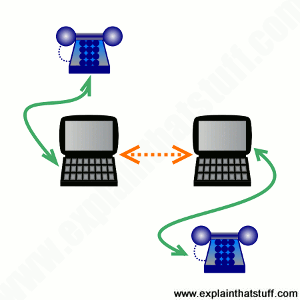
Truest Options in Calling Processes and Identity
Unlike a traditional directory, a reverse directory allows you to find, through a phone number, the name and address of a subscriber. You will discover who owns a phone number. With a traditional directory, the approach is the opposite. You find from an address or an identity, the phone number of a person. With the onbekend nummer the deals are perfect now.
All the solutions to find out who this number is
To use a reverse directory, you have a choice. The most common solution through your telephone company: it automatically displays the name of the person calling you. The second possibility of demand: thanks to a database, you will find the name hiding behind an unknown number.
Among the existing solutions, Telecom’s top secret service also lets you know who owns this number. The principle is simple: during a call, the operator asks the person calling to wait for the time that his name is given to the subscriber.

Does the reverse directory include the numbers in the red list?
Yes, when the service was created, these numbers were unveiled. But faced with the discontent of people, who paid at the time every month to be on the red list, the operators had to stop. Unlike those of the police or emergency services that are all listed, these numbers are no longer involved in the service of the reverse directory.
Tip for numbers from abroad: Using the international reverse directory, you can identify an unknown call.
The pot against the iron pot or the history against Telecom
The story goes back to 1992 when free, formerly known as Fermic, enters the reverse directory market. At the time, only This country Telecom offered this type of service via the telephone. Iliad, therefore, tries a game of poker and decides to create a reverse directory on Minitel. Very quickly, the 3615 ANNU becomes a reference and its advertising campaigns enter all minds. To counter its growing reputation, This country Telecom replicates by creating the 3615 QUIDONC. But its reverse directory service will never meet the success of its competitor.
The history of the reverse directory in the United States
The reverse directory saga begins in the United States in the 1950s. At that time, only companies use reverse directories printed by operators. It’s only 50 years later that the first inverted directories are appearing online. Under the influence of commercials, individuals begin to use this service on the Internet. But it must be said that research on fixed or mobile numbers is very different.
Indeed, in the United States, the mobile directory is non-existent since no database lists the mobile numbers of subscribers. As for people on the red list, they continue to pay a subscription to their operator. But as in this country, and thanks to the many reverse directory sites, it is possible to easily find the identity of an unknown number.
What is a reverse directory?
Since the invention of the telephone in 1876, it was essential to identify citizens with a telephone number to make life more convenient. This is the reason for being the traditional directory that includes all the numbers registered by all operators whether on landline or mobile.
Today, you can also access the number of an acquaintance just by flipping through a new type of directory called reverse directory. This practice is now known and adopted by many countries. Like the classic directory, a red list is drawn up for those who prefer to remain anonymous.
